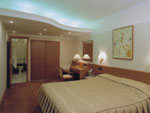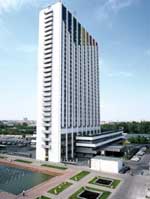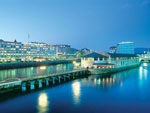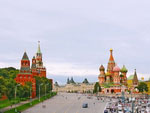 The Red Square located at walls of the Kremlin is undoubtedly the most known square not only in Moscow, but also in all Russia. During an epoch of Cold war, before the USSR disorder, foreigners could only dream of walking in this square that hosted military parades and New Year celebrations. Today the Red Square is one of the basic tourist sights of Moscow ,visited daily by thousand tourists from all over the world.
The Red Square located at walls of the Kremlin is undoubtedly the most known square not only in Moscow, but also in all Russia. During an epoch of Cold war, before the USSR disorder, foreigners could only dream of walking in this square that hosted military parades and New Year celebrations. Today the Red Square is one of the basic tourist sights of Moscow ,visited daily by thousand tourists from all over the world.
It is created in the end of 15th - the beginning of 16th centuries, and initially was built as raked territory in front of the Kremlin walls. Then the fortress had a ditch filled with water, with bridges to the square. The site of the square near the Moscow River gradually became shopping centre of Moscow, and the square was named ‘Auction’. In 1547, after a large fire destroyed merchant houses, the square was named ‘Fire’. Later, permanent stone trade houses were built side-by-side the Kremlin walls.
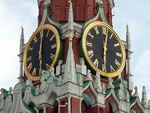 |
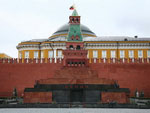 |
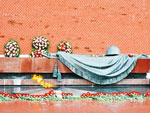 |
Since 17th century the Red Square started to play a considerable role in a city life - it became not only the centre of the trade, but also of a public life. News, gossips, hearings – it made the square’s life. Besides, trade was brought to a new level: one could find books, engravings, clothes, flour and meat products here. There were taverns, benches and workshops. The life here was simply raged. The area was paved by logs, and Cathedral of Our Lady of Kazan was built on the brink of the square. Since that time on, the square got its modern name ‘Red’, meaning ‘beautiful’.
The square’s look changed in the 18th century: many wooden constructions were taken down replaced by new stone buildings. Various administrative buildings sprang up, and in 1804 the Red Square was paved by a cobble-stone. So it took its modern oblong look.
In the beginning of 19th century, after Napoleon's invasion to Moscow in 1812, the Red Square and the Kremlin were considerably damaged. However, the city was restored very quickly. The area quickly lost the trading value, and now celebrations and festivities were held here. The second half of the 19th century saw the construction of the Museum of History, the Upper and Middle trade houses.
It was the 20th century when the Red Square took its present look. The covering was replaced with stone blocks, the Kazan Cathedral was taken down, and also Lenin's Mausoleum was built. The square became a place for the celebration of holidays, parades and national demonstrations. And after the end of the Great World War of 1941-1945, it hosted military parades in the Victory Day celebrated on May, 9th.
In the end of the 20th century, after disintegration of the USSR, the Red Square became a place for holding various events, such as, world celebrities’ concerts, ice skating rinks during winter time, the organisation of fairs etc. The Red Square is now opened for tourists from all world. Besides, the authorities started introducing some rules for the Red Square: for example, photographing by professional cameras is forbidden, bicycle rides on the territory of the square are also forbidden.
Nonetheless, the Red Square, with the area of 23000 square metres, is the most visited and known place among tourists in Moscow. What can be more interesting than sight that has been prohibited for the Western world for a long time?
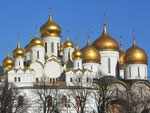 |
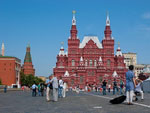 |
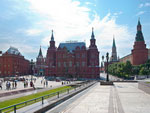 |

